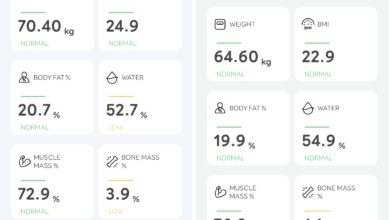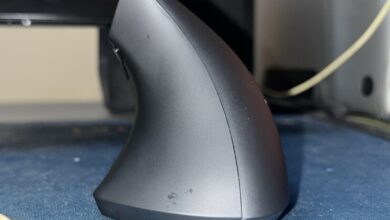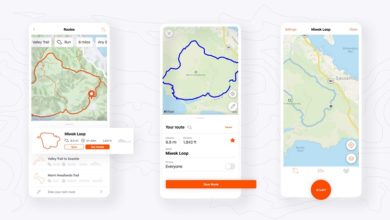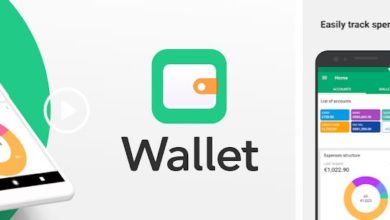Top 10 features of the Jio Phone

The Jio Phone is here. It has been rumored, leaked and talked about a lot and now it has been launched by Reliance Jio. The Jio Phone is a feature phone with very limited smart phone capabilities. In fact, I would call it a cross over between a smart phone and a feature phone. Here are the top 10 features of the Jio Phone. Read on to know all the details of the Jio Phone.

#1. It is effectively free
The mobile is priced at Rs 1500. But the money is like a security deposit. It is fully refundable after 3 years on the return of the used phone. Now the question is, will this feature phone last for 3 years? Will Jio give the money back if the mobile is broken or in a poor condition? Even if they don’t give the money, the user would get back 1500 in the form of Value added services.
#2. Special Jio Plans to start at Rs 24
Reliance Jio Phone users get a special tariff or Rs 153 per month for unlimited calls, SMS and 1 GB of Data per day. The user can also recharge on the weekly or daily basis. Weekly recharge for the same plan would cost Rs 54 and Rs 24 would give them 2 days of data and calls.
#3 Sim Locked (Dual SIM)
The mobile would support Dual SIM. But the SIM 1 has to be Jio SIM and any other SIM would not work. The second slot can be used for other SIM, but only for network calls and not for data.
#4 Jio Apps
The mobile will come loaded with all of JIO apps, giving access to all the media content for the users. The mobile has a small 2.4-inch screen, but it has a bunch of apps in it including WhatsApp and Facebook, pre-loaded,
#5 Forked Firefox OS
The mobile, reportedly, runs on a forked (highly modified version) FireFox OS. It has 4 GB of internal storage and just 512 MB of RAM. The OS functionality has been limited to support the minimal hardware. It is not yet clear if the mobile would have some sort of app store.
#6 Voice controls
Jio Phone would support voice controls. You can dial a number or ask for some information, just like Siri or Google Assistant, but with limited functions. I remember using such features on my old Nokia mobiles. But we will have to wait to see if that works on the Jio Phone flawlessly.
#7 NFC support
The mobile has NFC sensor hardware, but it is not enabled. An OTA update would enable the NFC once the NFC payment systems are functional in India.
#8 24 India Language
The JIO Phone is a phone for the masses and it supports 24 regional Indian languages. Typing and reading in Indian languages would be supported on the Jio Phone.
#9 Jio Cable
The mobile comes with a cable which can be used to connect it to any TV. LED or CRT or any TV can be connected to the mobile for casting. But you will have to be on the 309 plan to watch Jio content on a big screen.

#10 SOS Button
Emergency feature on smart phones is a need of the hour and JIO Phone has it too. It can be configured with a few numbers and pressing the “5” thrice will send a panic alert message to all the numbers. The mobile does not have GPS, so it may not send GPS coordinates.
Apart from these features, the mobile has all the basic features like calendar, calculator, FM Radio, Torch Light, WiFi, Bluetooth, etc… Jio Phone will be available to pre-book from 24th of August and will be available to buy from September on a first come first serve basis.
Full Specifications of Jio Phone
Jio Phone
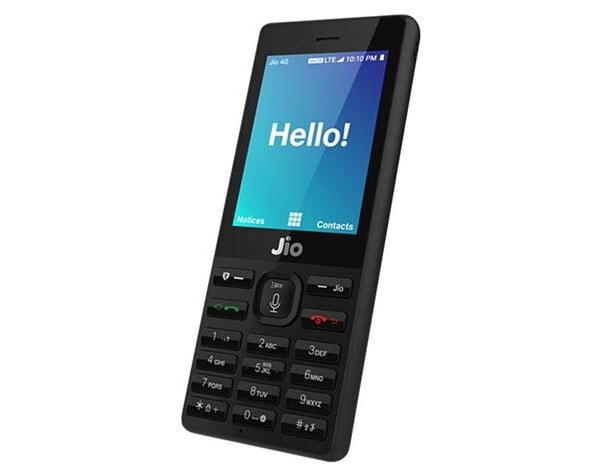

-
CPU:
-
RAM: 512
-
Storage: 4 GB
-
Display: 2.4 inch
-
Camera: 2 MP Rear / VGA Front
-
OS: Feature Phone
Jio Phone Specifications
Specs
General
| Price | Rs 1500 |
| Announced | 21 July, 2017 |
| Released | 25 August, 2017 |
| Status | Coming Soon |
Display
| Size | 2.4 |
| Resolution | 240x320 pixels |
Hardware
| RAM (Memory) <strong>RAM</strong> (Random Access Memory) is a type of computer memory that can be accessed randomly, any byte of memory can be accessed without touching the preceding bytes that allows information to be stored and accessed quickly from random locations. RAM is the most common type of memory found in computer systems, smartphones, tablets and other electronic devices. | 512 MB |
| Internal Storage <strong>Internal Storage</strong> is a data storage space (flash memory) mostly used in smartphones, tablets and other electronic devices where operating system, apps, music, photos, videos, files and other user data Is stored. | 4 GB |
| Card Slot <strong>Memory Card Slot</strong> is a special slot for inserting a memory card. Memory cards allow you to expand the phone's built-in memory, A memory card (sometimes called a flash memory card or a storage card) is a small storage medium used to store data such as text, pictures, audio, and video, for use on small, portable or remote computing devices such as mobile phones, mp3 players, digital cameras. | Yes |
| Sensors <strong>Sensors</strong> are electronic components that detects and responds to some type of input from the physical environment. The specific input could be light, heat, motion, moisture, pressure and location, The output is generally a signal that is converted to use in computing systems, a location sensor, such as a GPS receiver is able to detect current location of your electronic device. | None |
Battery
| Battery Type <strong>Battery Type => </strong> Cell phones run on various kinds of batteries depending on the manufacturer, phone size or shape and features. There are basically four types of cell phone batteries => Lithium Polymer, Lithium Ion, Nickel Metal Hydride and Nickel Cadmium. | Li-Ion (Lithium Ion) |
| Capacity <strong>Battery Capacity</strong> is a measure (typically in Amp-hr) of the charge stored by the battery, and is determined by the mass of active material contained in the battery. The battery capacity represents the maximum amount of energy that can be extracted from the battery under certain conditions. | 2000 |
Camera
| Primary <strong>Camera</strong> is able to capture photographs and usually videos, The most important characteristics of a camera are the resolution (measured in megapixels), lens focus type (fixed or automatic), higher megapixel cameras are known to capture higher quality photos, but not always a good measurement of the photos quality. | 2 MP |
| Secondary | VGA (0.3 MP) |
Design
| Type <strong>Design Type</strong> called form factor refers to a mobile phone's size, shape, and style as well as the layout and position of major components of phone. There are three major form factors seen in mobile phones => bar phones, folding phones and sliding phones. | Bar |
| Colors | Black |
Network
| SIM <strong>SIM</strong> (Subscriber Identity Module) is a small card that contains mobile network subscriber's account information. This allows the phone using the card to attach to a mobile network. The SIM card is most commonly associated with GSM and UMTS mobile networks. Moving a SIM card from one phone to another allows a subscriber to switch mobile phones without having to contact their mobile network carrier. SIM cards can also be used by a phone to store limited amounts of data, such as phone numbers and text messages. | Micro SIM |
| VoLTE Support for VoLTE | |
| Dual SIM | Yes |
Software
| Operating System <strong>OS => </strong> Every computer system run on a base software called Operating System (OS). Operating System controls all basic operations of the computer (such as smartphone, PDAs, tablet computers and other handheld devices). The Operating System allows the user to install and run third party applications (apps), apps are used to add new functionality to the device. | Firefox |
| User Interface <strong>UI</strong> or user interface of a device is the look and feel of the on-screen menu system. How it works, its color scheme, how it responds to button presses, all of these things are part of the user interface. | KAI |
Connectivity
| Bluetooth <strong>Bluetooth</strong> is a wireless communications technology for exchanging data between mobile phones, headsets, computers and other network devices over short distances without wires, Bluetooth technology was primarily designed to support simple wireless networking of personal consumer devices. | Yes, v 4.10 |
| Infrared <strong>Infrared</strong> connectivity is an old wireless technology used to connect two electronic devices. It uses a beam of infrared light to transmit information and so requires direct line of sight and operates only at close range. | |
| Wi-fi <strong>Wi-Fi</strong> is a popular wireless networking technology using radio waves to provide high-speed network connections that allows devices to communicate without cords or cables, Wi-Fi is increasingly becoming the preferred mode of internet connectivity all over the world. | 802.11 b/g/n |
| GPS <strong>GPS</strong> The Global Positioning System is a satellite-based radio navigation system, GPS permits users to determine their position, velocity and the time 24 hours a day, in all weather, anywhere in the world, In order to locate your position, your device or GPS receiver must have a clear view of the sky. | No |
| NFC <strong>NFC</strong> (Near field communication) is a set of standards for smartphones and similar devices to establish peer-to-peer radio communications with each other by touching them together or bringing them into proximity, usually no more than a few inches. |

